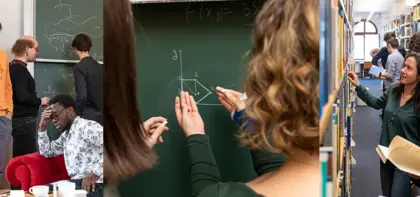
Scientific Members working in this area
/
Current PhD Students
Alumni
The graduates are organized alphabetically by last name. To make navigation easier for you, you can either select the initial letter directly or use the year selection to display all entries from a specific year. Additionally, you will find the title, advisor, and graduation year here. If you would like more information about a particular work, simply click on the title of the thesis.
A
Avetisyan, Zhirayr
B
Borris, Markus
D
Diez, Tobias
E
Eltzner, Benjamin
F
Frigeri, Giovanni
G
Geiß, Daniel
H
Hertsch, Alexander
K
Kazmin, Stanislav
Kürsten, Rüdiger
L
Ludwig, Thomas
M
Much, Albert
S
Schlemmer, Jan
Schmidtchen, Holger
Steffenoni, Stefano
T
Taslimitehrani, Mojtaba
Toomani, Vahid
Z